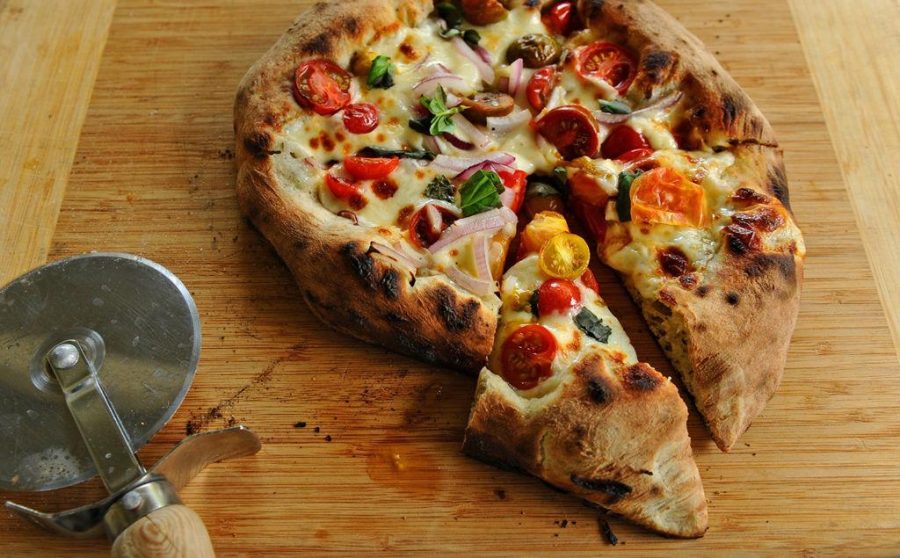Dining Guide: What does your GrubHub order say about you?
September 18, 2014
When students order out, chances are they’re ordering the same food as their neighbors.
GrubHub and Spoon University recently teamed up to analyze nearly one million food orders from college students, according to GrubHub spokeswoman Allie Mack. GrubHub, according to Mack, “connect[s] independent restaurants with hungry diners.”
GrubHub, both a website and smartphone application, allows consumers to order food from a restaurant for pick-up or delivery. Placing online orders and downloading the app are both free.
The GrubHub-Spoon University duo found, during their analysis — which Mack said took place between Sept. 1, 2013 and Dec. 15, 2013, and Jan. 15, 2014 and May 1, 2014 — that the differences between the general population and college students aren’t very stark.
To ensure that the data identified college diners, GrubHub analysts looked at orders placed in zip codes directly surrounding college campuses, Mack said. GrubHub also only studied orders from .edu email addresses.
“When looking at the most commonly ordered (i.e., most popular) dishes, there are not huge differences in order choice,” Mack said in an email. “However, when digging deeper, we learned of differences that exist on a behavioral level, as well as foods that students are more likely to order than the general population.”
The food with the greatest difference? Cookies. College students using GrubHub ordered cookies at a rate 179 percent greater than that of the general population, according to Mack.
Mack said college students also ordered calzones at a rate of 150 percent higher than the average population and wings at 56 percent higher.
Out of the dishes Mack listed as the most popular for college students, five involved chicken. Pitt junior Aditya Kulkarni, a finance major, said chicken is his favorite food.
“I usually eat a meat or something with a side of pasta,” Kulkarni said. “I eat sandwiches a lot, too.”
Both Kulkarni and Pitt freshman Sarah Offley, a molecular biology major, can agree on one thing: pasta. Offley said that was her favorite thing to order.
Italian and Chinese foods showed the highest difference between college student orders and general population orders.
One of the student dining habits featured in the report was, “Skip the sweets.” In the analysis, students ordered dessert at a rate 18 percent less than someone ordering from the general population, save for cookie orders.
Offley said she usually has “dessert once or twice a week.” Her favorite is cookie dough ice cream.
Kulkarni said he prefers pastries and said his dessert consumption was “very occasional.”
Could this be because college diners are trying to eat healthier? Maybe some, but another behavioral trend mentioned in the analysis was “Ask for the works,” meaning several modifications made to orders.
College students, at a rate 23 percent less than the general GrubHub population, have “special requests” or “healthy substitutions” in their orders, according to the release.
“I’ll try to stick with healthy, but not meticulously,” Kulkarni said. “I’m not calorie counting or anything.”
Offley, a vegetarian, said that she definitely tries to eat healthy.
“I typically go for whole grain, fruit and vegetables,” Offley said. “Just nothing overly processed.”
Along with behavioral trends and popular dishes, GrubHub and Spoon University ranked universities in categories like “Late Night Orders” and “Most Dessert Orders.” These findings are illustrated in an infographic on GrubHub’s blog.
While Pitt didn’t crack the top five in any category, the University ranked 13th in “Most Cost-Conscious Campuses” and seventh in “Most Generous Campuses,” according to Mack.
Mack said that “Most Cost-Conscious Campuses” was defined as “campuses with the lowest average subtotal when compared to other schools.”
“The average subtotal is 5 percent below the median for college students,” Mack said.
On average, Kulkarni said he spends between $7 and $12 for a meal when he eats out.
Offley said she doesn’t spend more than $15.
“Even that’s a little steep sometimes,” Offley said. “If I’m going out, I usually don’t order drinks, so that helps.”
But are college students really that different? Kulkarni said he noticed some differences between his dining habits in high school and his dining habits when he travels home during Pitt’s school breaks.
“I eat a lot more meat here,” Kulkarni said.
Kulkarni’s behavior is common for other students. In a section of the report called, “Embrace being omnivores,” data shows that vegetarian and vegan orders were 25 percent less common among college diners.”
Kulkarni also said that he “eat[s] out more here.”
Spoon University co-founder Mackenzie Barth said that’s not unusual.
“With school and social calendars booked around-the-clock, college students often find themselves without the time or ingredients (not to mention a kitchen) to prepare food for themselves — so ordering takeout is a huge part of their lifestyles,” Barth said in a GrubHubrelease. “It’s no surprise that students order comfort foods at home and in the dorm.”



